How to Get Rid of Mold on Windows
Updated July 2, 2021
Table of contents:
- What's So Bad About Mould?
- Where Can Mould Proliferate?
- How Does Mould Come About?
- Spotting Mould on Your Windows: Discoloration
- Other Methods For Spotting Mould
- How to Remove Mould From Windows
- What If Your Windows are Made With Wood?
- Protecting the Windows Going Forward
- The Call is in Your Court
Your Windows and Mould Issues: What You Should Know About Spotting, Resolving, and Preventing Mould Development
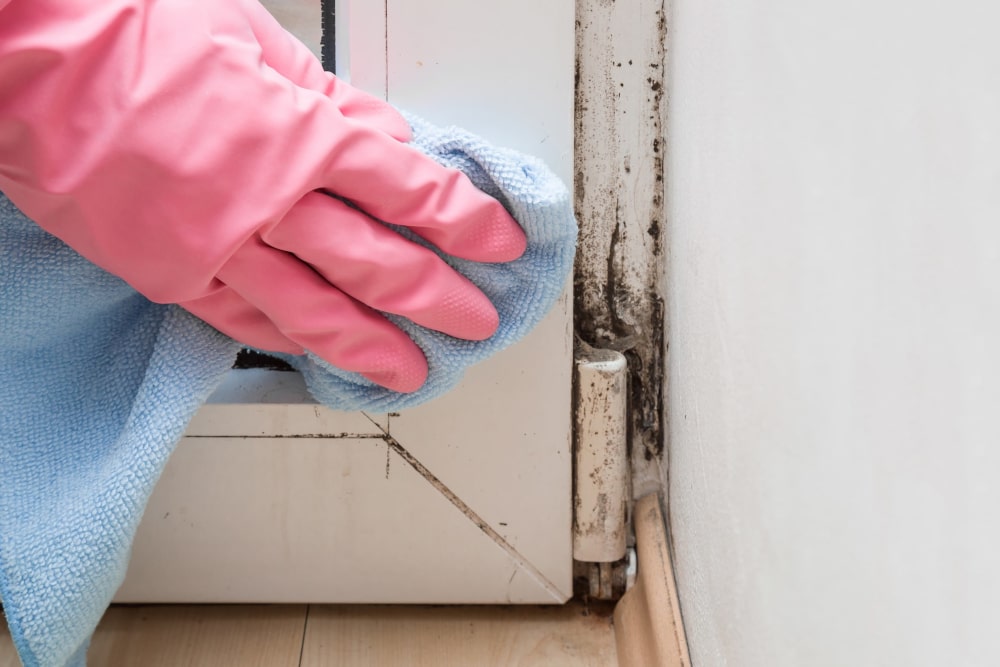
For many people, the home is the single most significant financial investment they will ever make. Protecting that investment does mean managing basic upkeep and performing maintenance when and as needed. While many homeowners do well in terms of addressing the more obvious aspects of maintenance, others can be neglected. One of those can be the presence of mould in the home.
In particular, it's easy to overlook mould that has developed on the windows. Given the fact that not all mould is dark in colour, it's sometimes overlooked as dust or something else that's benign and can be dealt with later. The result is that the mould has more time to damage the windows as well as cause other issues for anyone who's living in the home.
One thing that must be clear: mould in any form and in any amount is not something to take lightly. If there's any hint of mould found along the windows or any other part of the house, the time to take action is now. Here are some facts that you should know about mould, what to do when you spot it, and how to reduce the risk of it returning any time soon.
What's So Bad About Mould?
Apart from the musty scent that most forms of mould produce, why is it such a bad thing to have in your home? The short answer is that it causes a number of health issues and can also lead to structural damage.
The World Health Organization provides a great deal of information about mould, including some of the more common health risks that mould exposure can trigger.
Here are some examples:
- Eye Irritation: this could be in the form of dry eyes, eyes that appear bloodshot, and eyes that feel tired much of the time. Mould exposure can also contribute to eye dryness and the itchy sensation that comes along with it.
- Shortness of Breath: there's no doubt that mould exposure can make it harder to draw a breathe. The lungs may feel overtaxed when attempting to inhale and exhale. The throat may also feel sore due to the effort. For those who already have some sort of respiratory ailment, the mould will only make things worse.
- Cold-like symptoms: even if you're among those who don't have a diagnosed respiratory ailment, you could find yourself exhibiting some of the symptoms associated with the common cold. That includes nasal congestion, runny nose, coughing, and a lot of sneezing.
- Headaches: these can range from mild ones that you try to kick out with a couple of aspirin to pounding head pain that makes it impossible to do just about anything. Even with pain relievers, the ache remains as long as the mould is around.
- Skin Rashes: In some people, exposure to mould can lead to a number of skin conditions. That includes dry skin and various types of rashes. No amount of topical cream or ointment will banish the problem completely. You'll have to get rid of the mould.
- Anxiety and Depression: there's evidence that ongoing mould exposure can affect the mental and emotional health as well as the physical. Over time, sufferers may develop the racing mind, overthinking, depersonalization and panic attacks associated with various types of anxiety disorders. There is also evidence that mould can be the underlying trigger for mild to moderate depression. Getting rid of the mould will be a key element in recovering from these types of invisible illnesses.
That's a good overview of the health-related consequences of mould in the home. There are some other issues to consider, including what mould can do to your home's structure. Damage to wood framing is one of the primary threats that must be address. Mould spores can travel through the home on the soles of shoes, by way of the ventilation, system, and a number of other ways. As it spreads, it can adversely affect the integrity of the wood framework of the home. Over time, the weakening can lead to shifting that's more than mere settling.
Nothing good comes from the presence of mould in your home. From your health to the structural integrity of the home, it can cost you in more than one way.
Where Can Mould Proliferate?
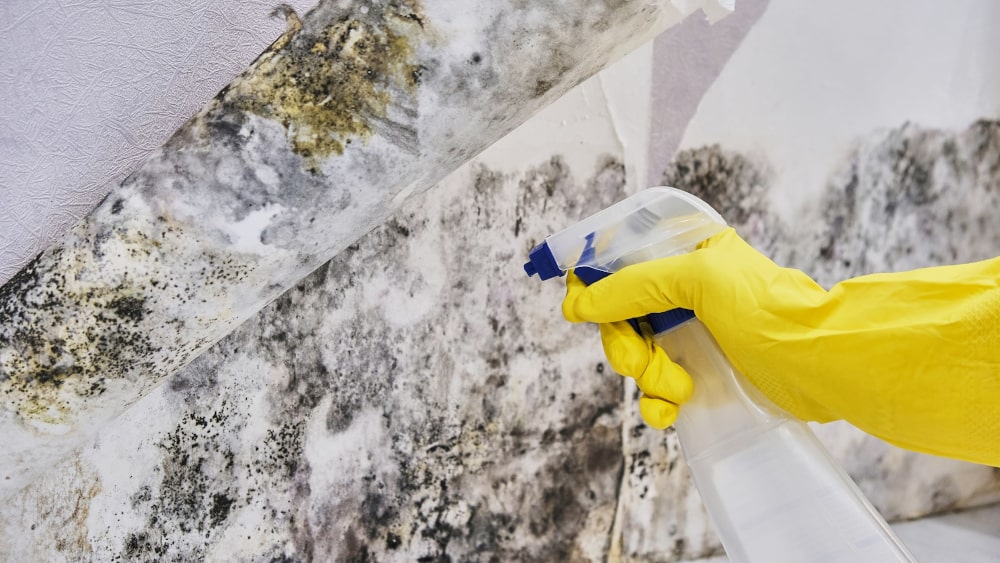
If there's any hint of dampness or moisture around, that's a place where mould can proliferate in your home. Some of the spots will come to mind easily. Others may not be the first places that you would consider.
The window sills and the glass panes are two examples of places where mould grows and may be overlooked. The primary reason is that people tend to ignore the windows until something's not quite right with them. Even if you dust the rest of the room, you may not get around to the sills more than once in a great while. In terms of the glass, you may not think to clean it more than once or twice a year.
There are more places where mould can lurk. It can be the damp spot in the basement, or the rafters that are directly underneath a small roof leak. There could be mould in the duct system that carries forced air to all parts of the home. Damp shoes tossed into a closet may set the stage for mould. Any leaks around pipe joints may also lead to this problem.
Essentially, there is no area of the home that is not capable of playing host to mould development. You do eliminate many possibilities with frequent cleanings and drying any spots where dampness is present, but do remember to look in the less obvious locations.
How Does Mould Come About?
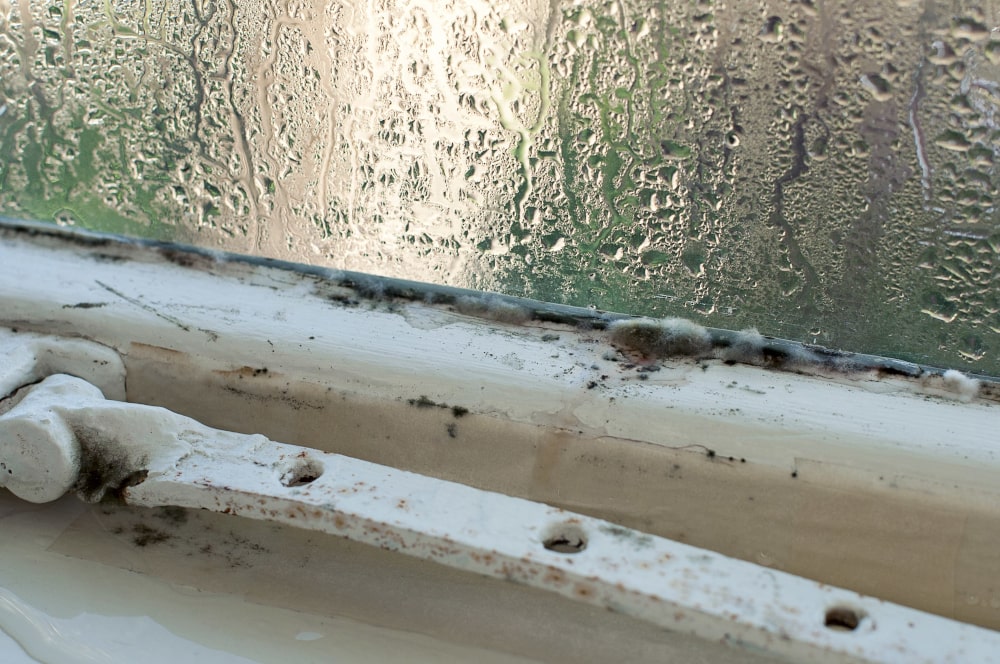
You already know that dampness allows mould to develop. Have you considered how that same dampness makes it possible for the mould to grow and begin to spread to other parts of the home? Consider these ways that the dampness develops, including how they relate to your windows:
Moisture Due to Humidity: during humid times of the year, the air can become moist inside. Your HVAC system will help keep this somewhat under control, but be aware that tiny cracks that allow for air seepage can let humidity in as well as heat. This is one of the primary ways that mould comes about on the window frame and the glass panes.
- Condensation is another culprit: while less of an issue when there's double or triple pane glass present, condensation on window glass can still set up the ideal environment for mould development. Check in the corners of the panes as well as along the sill framing that holds them in place.
- Water Penetration Due to Leaks: A leak in the roof, around a water pipe, or some sort of crack in the window framing provides the perfect point of entry for precipitation. Unless you repair and seal those areas, the potential for mould to develop and begin spreading through the house is quite real.
Contemporary windows certainly offer more protections than the windows of decades past. Vinyl framework coupled with higher quality glass panes are two examples of what makes those windows less likely to contribute to mould issues. Even so, remember that proper cleaning, care, and repair when needed will further reduce the risks.
What sort of measures can you take? Do take a moment and wipe down the window framework, including the sashes and panes, after a storm. While sunlight will help dry out the moisture for the most part, there are still tight spots here and there that will harbour moisture. Drying those spots manually means removing the environment where mould can set up.
Remember that with mould, it only take a little to lead to a major issue. Once mould does get into the home, it can spread more rapidly than many people realize. If you perform due diligence, you can nip the problem in the bud rather than having to face costly and time-consuming treatments later on.
Spotting Mould on Your Windows: Discoloration
There's not much you can do about mould until you find it. That means knowing how to recognize that mould is present on your windows. Discoloration is definitely a sign that you have a mould problem.
You may think of mould as being a dark grey or black, but it can come in more hues. The Centres for Disease Control identify many types of mould, including the ones that are more likely to be found in home settings. Cladosporium is a common example. So is Penicillium and Aspergillus. Did you know that Alternaria is among the types of mould that may have more of an olive green or even a brown colour rather than black? Don't assume that a hue other than black means the problem isn't mould.
It's true that discoloration due to mould can happen anywhere on the window frame, sash, or the panes. Even so, pay close attention to the areas where the sashes slide up and down the rails or where they swing away from the framework. You also want to take a closer look at the corners where each pane is held in position. What may look to be an accumulation of dust at first could be mould of a different colour.
Don't forget to check at the points where the window framing meets the walls. If mould has developed in the wall for any reason, it may begin to seep out around those seams. While mould in a wall will require help from a professional, you can fight back by cleaning around the framing proper.
Other Methods For Spotting Mould
Taking note of discoloured areas is a great way to detect mould. There are some other strategies that will also help:
- If you have stained or tinted glass, seeing signs of mould may be more difficult. You can try what's sometimes called the bleach test. This works on all material used for frames as well as the glass. Mix a solution that's one part bleach to 16 parts water. Use a cotton ball to rub over the areas that you think may be affected. If there's any type of stain left on the cotton ball, you may have mould.
- Invest in a mould testing kit. This is often sold any place that you can find home repair supplies. It's isn't expensive and will provide the answers that you need.
- Odour is a strong indicator that mould is present. That doesn't mean you need to shove your nose in the tight spots along the window and take a deep breath. Even if it is dust rather than mould, that's not a healthy approach. Instead, try cutting off the air conditioning and leave the home for a few hours. When you come back, a much stronger stale scent indicates there's mould somewhere. If the place is warm but has no stronger odour than when you left, the possibility of mould is lower.
How to Remove Mould From Windows
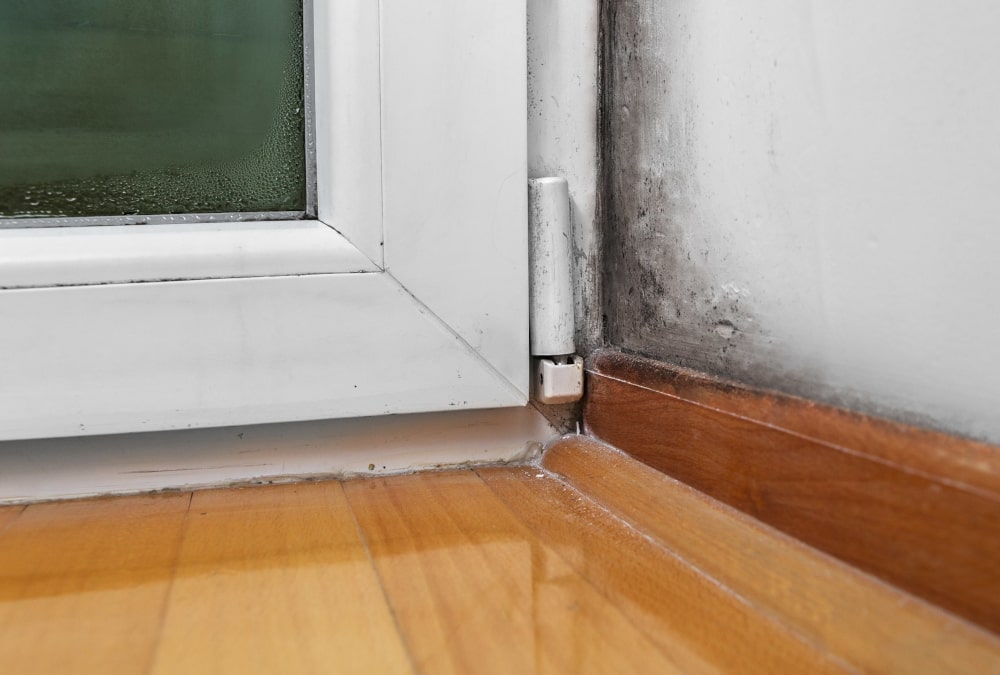
Now that you have a more detailed idea of how mould can develop, how easy it is to spread, and what an impact it can have on your physical and emotional health, it's time to discuss getting rid of any mould that may be present. That includes addressing what to do about any mould you find on the window glass, sash, or frame.
You may be one of the lucky ones who spots the mould early on. That's good news, since it may not be necessary to call in professionals to manage the mould remediation. You may be able to use simple do-it-yourself methods to eliminate the problem.
If you want to give the DIY approach a try, there are some resources that must be on hand. Here's a short list of what to collect:
- Heavy duty cleaning gloves; the ones you purchase for doing most types of household cleaning using readily available products will do.
- A face mask: dealing with mould usually means stirring up spores. You don't want to breathe them in. The most effective route to take is the N-95 respirator. Since you likely have some masks tucked away somewhere after the pandemic of 2020, feel free to use them if they are still sealed in the original packaging.
- Something to protect the eyes: Wearing your regular eyeglasses isn't enough. Invest in goggles that fit comfortably but snugly around your eyes. Clear ones will ensure your ability to see the mould remains intact.
- Cleaning solutions: there are solutions designed to help remove mould. You can buy those or you can make something using agents you have at home. A word of caution if you go for the last suggestion: make sure nothing that you mix releases toxic fumes. If in doubt, check resources from a reputable site before mixing anything.
- Spray bottle: you will be spraying some of the cleaning solution during the process. In fact, get two spray bottles. You'll soon see why this makes sense.
Now, on to the actual plan for cleaning away the mould:
Step 1: Spray the Affected Area
Remember that empty spray bottle? Fill it with water that's at room temperature. You'll use it to saturate the area where the mould seems to be present. There's a method to this apparent madness that you may have overlooked.
Spray the area thoroughly. That may seem odd since you know that mould thrives in moisture. That you're doing is to wet the mould so that the spores are less likely to spread. Be sure to spray the area around each spot as well.
Step 2: Gently Wipe Away the Mould
Allow the water to permeate the discoloured area and then spray on a the cleaning solution you've prepared. If you went with a homemade product like one part dishwashing liquid to one part water, spray an even layer. You can use a paper towel or some sort of clean cloth wipe the space, including the areas surrounding the discoloration.
You may have to repeat this twice. That's because the mould may appear to fade at first and then begin to darken again. Don't worry about that. A second round will often take care of the problem.
With that second round, be prepared to rub and wipe a little more aggressively. On tough areas, you may even need to dig out a scraper and run it gently over the area before spraying and wiping a third time. Don't forget to use a fresh cloth with each application. Once done, place all of the used products in the trash, secure the bag tightly, and take it to the bin outside. Any tools you use should be immersed in a mixture of bleach and water to kill any lingering mould spores.
Step 3: Soak the Area in Bleach
While the area looks clean now, you're not quite done. Fill your spray bottle with equal amounts of bleach and water. Spray the area liberally and allow it to remain there for a few minutes. This will kill any lingering spores on the surface or that may be lurking in the upper layer of the material. Wipe with a clean cloth and the cleaning part is done.
Step 4: Dry Everything You've Treated
Use a clean, dry cloth to remove any lingering hints of moisture that may be present. You want the space to be dry to the touch. Since you may treat tight spots, follow this with opening the sash and allowing the sunshine and wind to aid in the drying process. If there's no wind, aim a fan at the area and turn it on high. You can also use a hand-help hair dryer if there's one tucked away in the bathroom. The heat from the dryer will also serve as another way to kill any lingering spores.
What If Your Windows are Made With Wood?
The process above works well with aluminum and PVC windows. It also works with wooden sashes and frames that are made with treated wood and that have a proper sealant. If your windows are wood and have little to no finish, another approach is called for.
Having the windows sanded may be the only real solution. It gets rid of the layer where the mould has set up. Once that's done, wipe down the area to get rid of any residue. Apply a small amount of oxalic acid to effectively bleach the spot. Rub it in using an old toothbrush or a cotton swab. Rinse with water and see if the spot darkens again. If so, apply the acid rub again. Rinse a second time and then dry the area.
Make sure the spot is completely dry before you begin to restain the wood. Remember that a coat of varnish or some other sealant will prevent mould from seeping into the wood again.
Protecting the Windows Going Forward
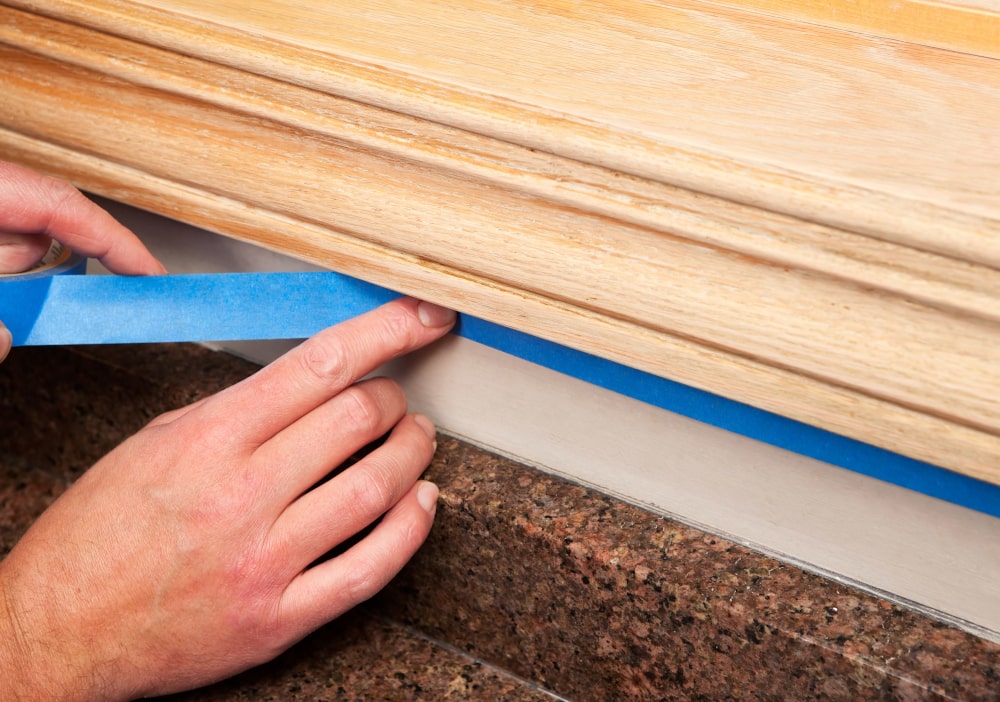
No matter what someone tells you, there's no foolproof way to prevent mould in the home, including on the windows. Your goal is to minimize the potential for mould development and be ready to take action if some does show up on the windows. Here are some tips that will help reduce the potential for mould:
- Make sure the home is properly ventilated. This is true in any part of the house, but particularly areas that are more apt to have more humidity. That includes the bathroom, kitchen, and basement. If air can move freely, there's less chance of moisture settling on window frames and panes, and ultimately leading to mould production.
- Know how to set the thermostat to reduce the potential for mould. During all types of weather, a setting of just under 70 degrees Fahrenheit (21 Celsius) inhibits mould growth. Anything higher increases the odds for mould to appear.
- Locate and seal any leaks. If there are gaps between sashes and rails, between upper and lower sashes, or any small points of separation around the framework, seal them as quickly as possible. You may need professionals to make the necessary repairs, but the money is well worth it.
- Install and make use of a dehumidifier. This provides further control over the humidity in the home and discourages mould growth. Run the dehumidifier at least 16 hours each day. It should have amply reach in areas that tend to be more humid, like bathrooms, basements, and any other area that you think would be more likely for mould development.
- Become a solid home cleaning whiz. That includes your windows. Instead of remembering them a couple times each year, make them part of the same routine that features dusting and vacuuming. You'll spot potential problems faster and reduce the risk of mould proliferation. You can clean using the bleach/water combination along with the proper safety equipment.
Your goal is to do whatever is necessary to prevent mould from developing. Along with reducing the possibility of all sorts of health threats, these methods also help the home to smell fresher.
The Call is in Your Court
Mould on the windows is not just unsightly. It poses a real threat to you, your loved ones, and your home. While it may mean making some changes in your usual habits, taking the time to look for and get rid of mould around your windows will help everyone feel better, avoid what could become permanent health problems, and save money in the long run. Get started today and you won't regret it.
How to Get Rid of Mold on Windows
Source: https://www.windowscanada.com/whitepages/how-remove-and-prevent-black-mold-windows.html